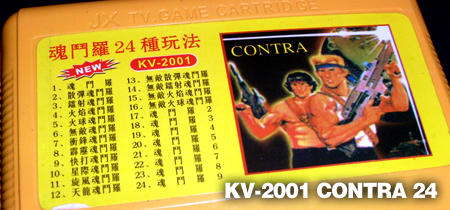The past twenty five years have been extremely good to Nintendo's game changing platformer along with its unlikely yet likeable protagonist. Since its arrival on the Famicom the game has not so much aged, as matured, the secret to its 'simple to pick up, difficult to master' play mechanics remaining as closely guarded as a junior lab technician carrying the recipe for Merchandise 7X on his first day at Coca Cola. Miyamoto's fourth game as director introduced many of the now commonplace staples of the genre and its immediate and lasting influence on the industry is testimony to the game's original, impeccable design.
At a time when most developers were reeling from the video games crash of the early eighties,
Super Mario Bros. signalled a wake up call to consumers and a call to arms for developers to see the potential of the
Famicom hardware. While not the first side scrolling platformer, in an industry swamped with single screen competitors the scrolling nature of
Super Mario Bros.' worlds brought a genuine sense of freedom to the medium. The goal was no longer a repetitive, claustrophobic battle for elusive high scores but a genuine hero's quest, complete with requisite damsel in distress, a dastardly villian with his eye on the Kingdom, clouds to explore and dungeons to uncover. A lesson in perfection, stretching out in front of you across eight beautifully scrolling worlds.
Today the game remains as fresh as it ever was.
The Mushroom Kingdom proving a virtual playground of distractions in
Mario's quest to rescue the princess. And as fun as these distractions are to uncover,
Super Mario Bros. is truly at its best when levels are being navigated at break neck speeds, the risk of impending death from a rogue green shell or a flaming fire pit never a moment away. For most gamers the levels of
Super Mario Bros. are ingrained in the psyche, such is the lasting popularity of the game. The challenge no longer simply being to beat the game, but to play 'that perfect game' of
Super Mario Bros., stomping every enemy, collecting every coin, exploring every pipe and consistently hitting the top of that increasingly difficult to reach flagpole. As with all of Miyamoto's creations,
Mario and his supporting cast of heroes and villains brought a sense of characterisation to a genre that had been terribly one dimensional. Afterall, how many other games can you recall where you can scream at the entire cast of enemies by their individual names? Adding to this sense of character was composer Koji Kondo's now iconic musical score. Perhaps the most recognisable score in video game history, Kondo's short melodies having been created so that they could be endlessly repeated without sounding repetitious to the player. A trait that would become synonymous with the Composer's work throughout his career.
Twenty five years ago the original Super Mario Bros. set a bar so high that even Nintendo themselves must have had sleepless nights about how to follow it up. Third party developers of the time rarely achieved the design or success of Nintendo's crowning franchise and its this strive for perfection from the start that has made Mario such an enduring figure. So popular is Mario's legacy that it echoes the global impact of long term popularity challenger Mickey Mouse. It follows then that, If Jumpman in Donkey Kong was Miyamoto's Steamboat Willie, then surely Super Mario is his Sorcerer's Apprentice. With a consistently high standard maintained in the games that have followed since the original, Super Mario Bros. has long since been surpassed, refined and perfected. However, much like the ever popular Zelda series the blue prints for Mario's success were set in stone in this first Famicom outing, validating Miyamoto's often overused but wholly deserving moniker as the 'Walt Disney of Video Games'.
Favourite Moment: My favourite moment with Super Mario Bros. was not specifically with the game, but rather with the format I recently played it on. Running at a full 60Hz on a Japanese AV Famicom, is the only way to experience this original outing if you, like me, were unfortunate enough to have grown up with the decidedly slow 50Hz PAL versions of the game. To play Super Mario Bros. the way it was intended was a genuinely refreshing experience, giving me a renewed interest in its legacy.













